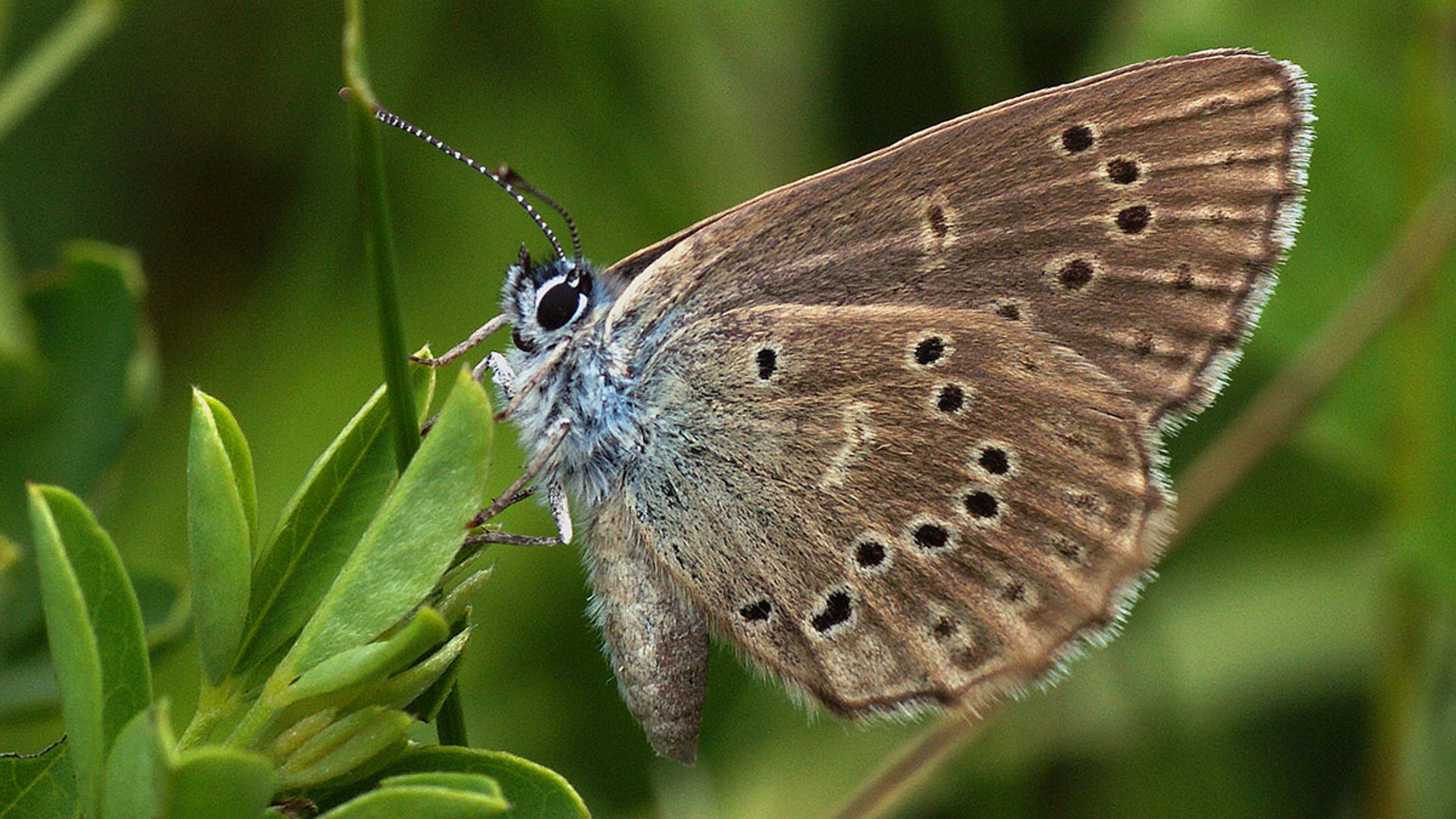When a population of any species gets too small and isolated, it may find itself at much greater risk of dying out. As a result, these tiny populations — which are often fatalistically called “the living dead” — sometimes don’t get prioritized for conservation.
That could be the wrong approach. A new paper points out that these small populations could actually be quite viable on their own and are still worthy of protection.
The study, published this summer in the Journal of Insect Conservation, was conducted at Narew National Park in northeast Poland, where a few dozen Alcon large blue butterflies (Phengaris alcon) live on 13.5 acres of hilly habitat surrounded by wetlands. The butterflies have managed to hang on there for years, despite the fact that they’re located more than 30 miles away from the nearest other population of the species and that the hills only hold about 300 marsh gentian (Gentiana pneumonanthe), the food-plants that the butterflies need to survive.
You might think that under such extreme, isolated conditions, this butterfly population would be too small and inbred to be worth exerting effort to save. But researchers from a group of Polish institutions proved exactly otherwise. They found that the Alcon blues do have fairly low genetic diversity, but they still have relatively long lives and can move around their habitat without much obstruction. On top of that, they also have a random mating pattern that helps reduce the risk of further inbreeding.
In other words, they’re doing just fine. As the paper concludes, “Our study indicates that very small size does not necessarily translate into low viability, and thus low conservation value of an isolated local population.”
Even the researchers didn’t necessarily expect that. “We were quite surprised to see that such a small and strongly isolated population still manages to persist against all odds,” says lead author Piotr Nowicki, an associate professor at Jagiellonian University’s Institute of Environmental Sciences in Kraków.
That’s actually a contrast to other butterflies in the genus. Because the Alcon blue and its relatives rely on very specialized ecologies — they need to eat specific plants and, in their caterpillar phase, parasitize on just one kind of ant before metamorphosing — they have become endangered species in many European regions and need dedicated conservation programs. “With the success of some of these programs, they achieved the status of flagships of biodiversity conservation in Europe,” Nowicki notes.
Those conservation programs might not normally prioritize a tiny population like the one in Narew National Park, but Nowicki and his coauthors argue they should. If a population of a few dozen Alcon blues can persist for decades, so could other populations of other species, given the right conditions.
“The main take-home message from our study,” Nowicki says, “is that there is no need to be overly pessimistic concerning small and isolated populations and to write them off as a rule in conservation programs, because some of them may actually do well, and thus be worth the efforts aimed at preserving them.”
So how should conservationists assess a species’ population, if not by size and isolation? According the paper, the parameters that should be considered — for insects, at least — include their ability to move around their habitat, the longevity of adults, their breeding success rates and strategies, and what times of the year the population is active. These parameters could conceivably carry over to other species groups as well.
Unfortunately, Nowicki doesn’t expect this particular Alcon blue population to benefit from the conservationists’ research or these conclusions. “This is because the population is located within the Narew National Park, where passive preservation measures are strongly promoted and where the butterfly is not listed among the priority species for the park,” he says. That doesn’t mean they’ll die out, just that they won’t get much of a helping hand on top of their own efforts to survive.
Still, the research exemplifies how species can hang on in a remote, degraded environment — something that’s all too common in today’s world. Hopefully it will serve as an example to other researchers and conservationists looking to study and preserve the living dead before they fade away into the darkness.
Previously in The Revelator:
The Philosophy of Insect Conservation


